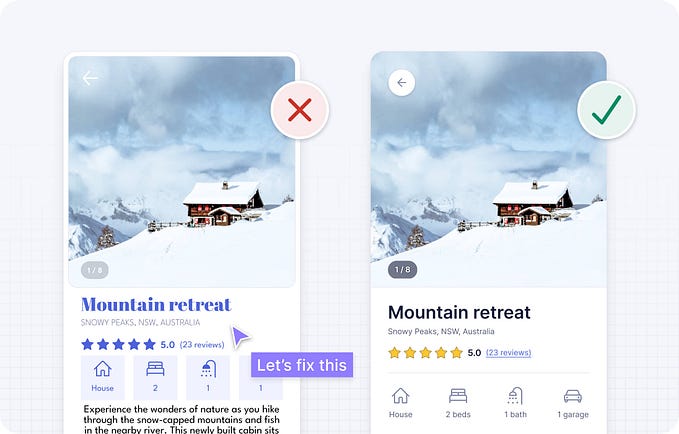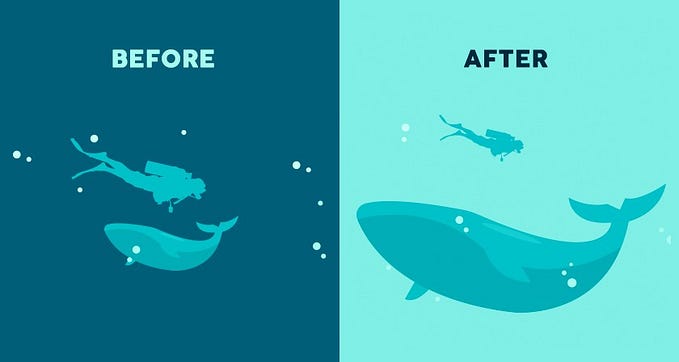Human-Centered Design Approach: Designing Interfaces That Enhance Experience

Every invention brought into this world became successful for three reasons: simplicity, usefulness, and versatility. Take the lever, for instance; its design is simple and the ways to use it are numerous. For thousands of years, this sophisticatedly designed machine has formed the basis of most of the modern machines we have today.
That being said, the design with the most human-focused approach bears grand power due to its broad-spectrum usability, high functionality, and an undeniable scope of experience.
What Is Human-Centered Design?
Keeping the lever analogy in mind, humans have a way when it comes to designing for themselves and other humans. The inventor of the level probably came up with the idea of using the machine to solve one of his problems. The other user might have a different problem, to which the machine corresponded in the respective fashion.
As more people came across the simple device, more ideas for its usability were birthed as per their needs, hence making the machine a versatile one. This very idea of comprehensive usability fashions the human-centered design approach that has led humans to design interfaces to enhance user experience.
Fast forward to digital design, the human-centered design brings the human aspect of the design into focus. It puts users in the first lane. Instead of designing interfaces where users adapt to the system, the human-centered approach encourages designers to develop interfaces that are adapted to the needs of the users.
So, what mainly makes a design human-focused? What criteria does it fulfill to be completely humane? From lever to today’s advanced computer systems, a human-focused design is:

While the technologists believe in the users’ ability to adapt to learn, the latter must first be taught about how to use a certain design. For instance, if they see a hamburger menu, they must know that the design is meant to expand once it’s clicked, or if they see a Call To Action (CTA) button, they must know what it does.
At this point, designers need to introspect their understanding of the human-centered design philosophy, which iterates to present impactful yet concentrated solutions to those experiencing the problem.
The Challenges Of Designing Human-Centered Design
As far as design is perceived in the human context, it’s the way actions, services, and other human aspects are created and planned, shaping the processes of life. The quality of designs that enable human interaction with nature creates a vivid expression of different values, which could either work in harmony or present challenges.
The complexity can make human interactions and behavior unpredictable, and designing human-centered designs becomes easier said than done. Following are some common challenges of designing human-centered interfaces:
Failure From Repeated Attempts
Don’t be afraid of failure. Instead, learn from failed attempts. As a designer, you need to create a user persona, for which you need to bring together the attributes of design. You need to choose a user — either fictional or real — and try to map their daily routine. Notice their struggles and pinpoint the loopholes in their routine. If you’re tried one method and failed at it, try another one.
Research, Grow And Repeat
Designing a human-centered interface is a process. A product can only be used when its design aligns with the usefulness, effectiveness, learnability, and attitude of the user. For that reason, you will have to dig down and research whether the product’s design caters to the user well. Keep growing the framework of your knowledge and repeat until you inch closer to a user-centric design.
Develop A Multidisciplinary Approach
The human-centered design needs multidisciplinary expertise. You need to learn, learn, and learn. By learning how your idea of the user perception and the actual user-centered approach aligns, you can only see the multiple sides of it. From designing to understanding the systems and experiences involved, a designer can only address the problem with a 360-degree view.
Reduce Cognitive Load For The User As Much As Possible
The idea of a human-centered approach revolves around freeing the mental space, so to reduce the cognitive burden user experiences with a given interface. But it requires a lot of user research. For a specific user, you need to understand the environment in which your user dwells and how they communicate with it.
The Principals of Designing Human-Centered Interfaces
While a human-centered design focuses entirely on problem-solving, it roots deeply into other factors governing its development and practice. It aims to impact the lives of others. Following are some of the principles that will help you design intuitive interfaces and improve user experience.
1. Leverage User Data
Your users are humans and they expect something that resonates with their memories, experiences, and expectations. For a designer, personalization lets them discover what their users want. Personalization makes the user feel like they’re talking to a friend. Here, you need to set your preferences aside and notice how you can use their preferences to your advantage. To know how you’re going to grasp user data, you must know of the following:
a) Behavioral Patterns
The way your users interact with your design gives cues about what they like and dislike. You have to notice their behavioral pattern via clicks, likes, and other positive experiences on your design. Using these behavioral cues, create a user persona base and determine your audience.
b) User Preferences
Another thing to leverage user data is to notice what they’re interested in, what grabs their attention, and what makes them tick. Do they prefer certain colors? Are they into some particular imagery? Do they prefer a certain theme? Get skin deep when discovering these possibilities as these might serve as the triggers to come to terms with the users.
2. Use Natural Patterns
Designing for humans is like designing for yourself — because you’re a human too. When interacting with a design, users develop natural patterns as soon as they start becoming familiar with a design. When you’ve come across the behavioral cues with mastery, using the natural patterns become mandatory.
a) Familiar Graphics, Navigation, Etc.
If you’re opting to connect to your users on a ‘human’ level, you might want to keep different aspects of the design in the loop with the users’ feasibility in mind. For instance, if you’re designing for a travel site, you will display the images of the places your users will like to visit. You can also use the ‘hamburger menu to allow the users to interact with the drop-down menu with ease.
b) Multimodal Communication
Communication just doesn’t have to be verbal. The main idea of a human-centered design is that you communicate with the user’s perception in mind. That said, you don’t have to stick to one medium; you can use a variety of communication modes to express the usability of the design. Also, it helps improve error avoidance, where users can detect their natural pattern of interaction and explore its flexibility.
3. Reduce Cognitive Load
As mentioned before, cognitive load reduces a person’s ability to focus on his surroundings and connect with them. Cognitive load is directly related to user performance, where increased load retards the user performance. You need to design to reduce the load, so the mental space is freed and focus on adaptability is prioritized.
a) Encourage Clicks Instead Of Long Text
What you can do here is to leverage the user data and their experiences. If they don’t like long texts and interruptions, remove them. If they are bombarded with too many color choices, opt for a maximum of three colors. Instead of displaying too much information, encourage the users to take action via call-to-action buttons and limited, but active visuals.
4. Follow Best Work Practices
Best practices are a result of a trial-and-error sequence. The goal is to create something that your users can actually use. Whenever you’re testing your design prototype, know that you’re designing it for the people with a problem. Always look for improvements in your design.
a) Don’t Change Industry Standards
When you’re opting for the best practices and still want to speed up the process of their integration in your design, stick to the proven methods. Go for the grounded practices in the industry popular among the users. For instance, most video platforms offer accessible options like dark mode and captions for users with visual or learning disabilities. Seek the problem you’re addressing and maintain the standards.
b) Be Consistent
Consistency is the key to mastering human-centered design. If you’re making your design-oriented towards a conversational feel, keeping it natural shouldn’t hurt the design and the users’ ability to interact with it. Keep consistency in practice to bridge the emotional gap.
5. Keep the Design Simple
Humans yearn for simplicity. But that doesn’t imply that simple is easy. This kind of simplicity requires research, iteration, and testing. If you’re focusing on keeping the iteration phase simple, chances are that the product or design will be equally useful for the user.
a) Avoid Complicated Features
Of all the ways to keep your design simple, the features in your design should comply with your approach towards simplicity and ease of use. From the navigational features to the placement of search boxes, each design element should avoid complications. If the users are unable to understand it, they might leave and the purpose of your design might fail.
b) Keep Things Simple And Minimal
From texts to images, keep your design simple to the point of highest effectiveness. Instead of introducing a new idea, test with something your users are familiar with. Keep the design elements minimal. For example, use a limited color scheme or high-quality hero images. Simplify the menu with what your users are comfortable with. Generously use negative space and spread out the contents to give peace to both the content and the users. Make sure you don’t deviate from the user’s perception of a simple and useable design.
6. Minimize Interruptions
Every site your users visit hovers them with popups and banners to accept cookies. Do they like it? probably not. Human-centered designs are created over experiences and memories — any interruption can cause glitches in that experience. The rule of thumb here is to create a seamless experience that doesn’t hinder the user from achieving his goal.
a) Don’t Undermine User’s Ability To Engage
You are not the user. Let that sink in. You’re designing for the user on the other side. What seems understandable to you might not come easy to them. But that doesn’t mean that they lack the ability to interact. With all the simplicity in your design, never downplay your users’ ability to interact and engage intelligently. Navigate them via clear actions to guide their course.
b) Avoid Unnecessary Distractions
Like we stated, distractions limit your users’ capabilities to experience and unload the cognitive burden. If you’re going to cut the distractions, such as media playing in the background or irrelevant imagery and links in your design, your users will thank you for a uniform experience.
7. Be Transparent to the users
Even if your users are not complaining of design complexity, there is no reason to be secretive to them. The more transparent you are, the more your users are going to trust you and will build an emotional connection with your design.
Make sure there isn’t room for dark patterns. You should NEVER opt for these as they are not only deceptive but also tend to exploit human psychology. The users are ‘forced’ to do what they don’t want to do. In that sequence, never take advantage of the user naiveness. Your goal is to make design useable and valuable for them, not to involve in surveillance capitalism and market yourself via advertising.
Conclusion
User-centric design coincides with a human-centric one. The point they meet is the provision of a versatile design solution that aids the user solve their problems. The best thing about this article is that it applies to every problem a human designer may experience, even if they don’t follow the human-centered design process.










